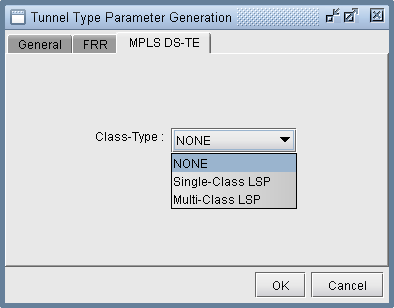Creating a New Multi-Class or Single-Class LSP
When creating a new tunnel object, there is an option to specify the type of LSP to create. The type can be Regular (“NONE”), Single-Class LSP, or Multi-Class LSP.
Figure 1: Selecting the Type of DiffServ-Aware LSP

